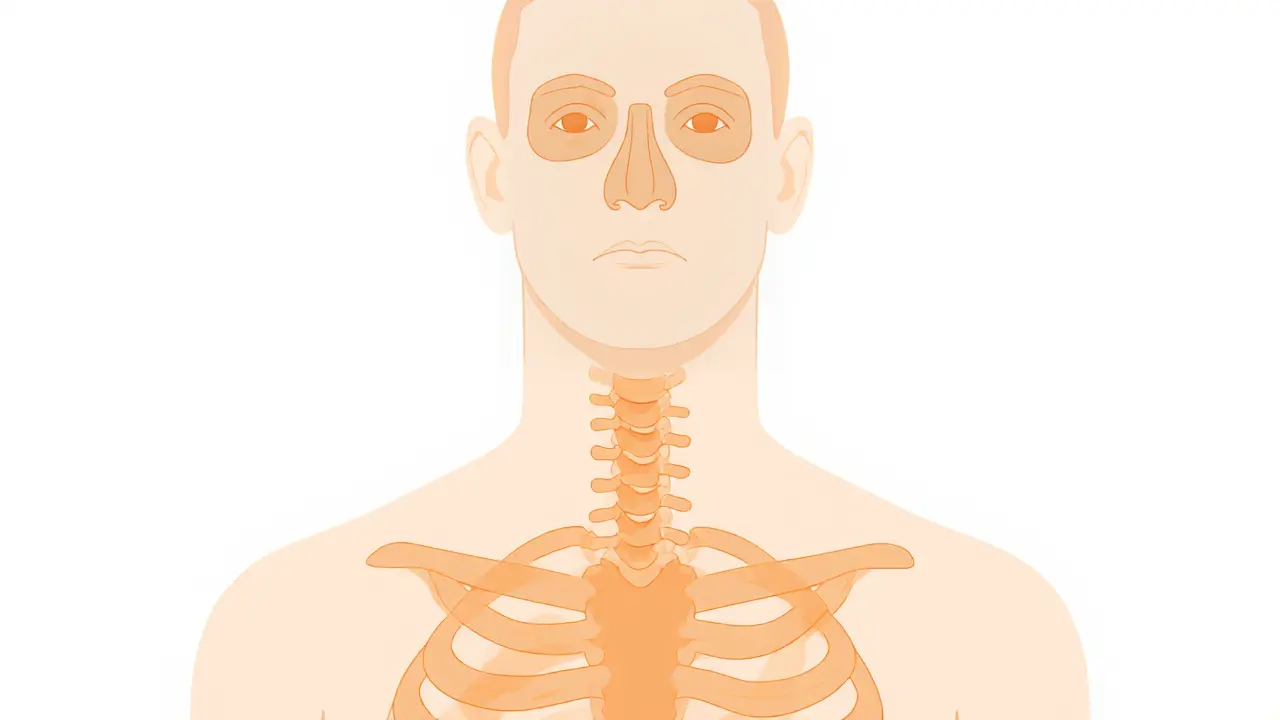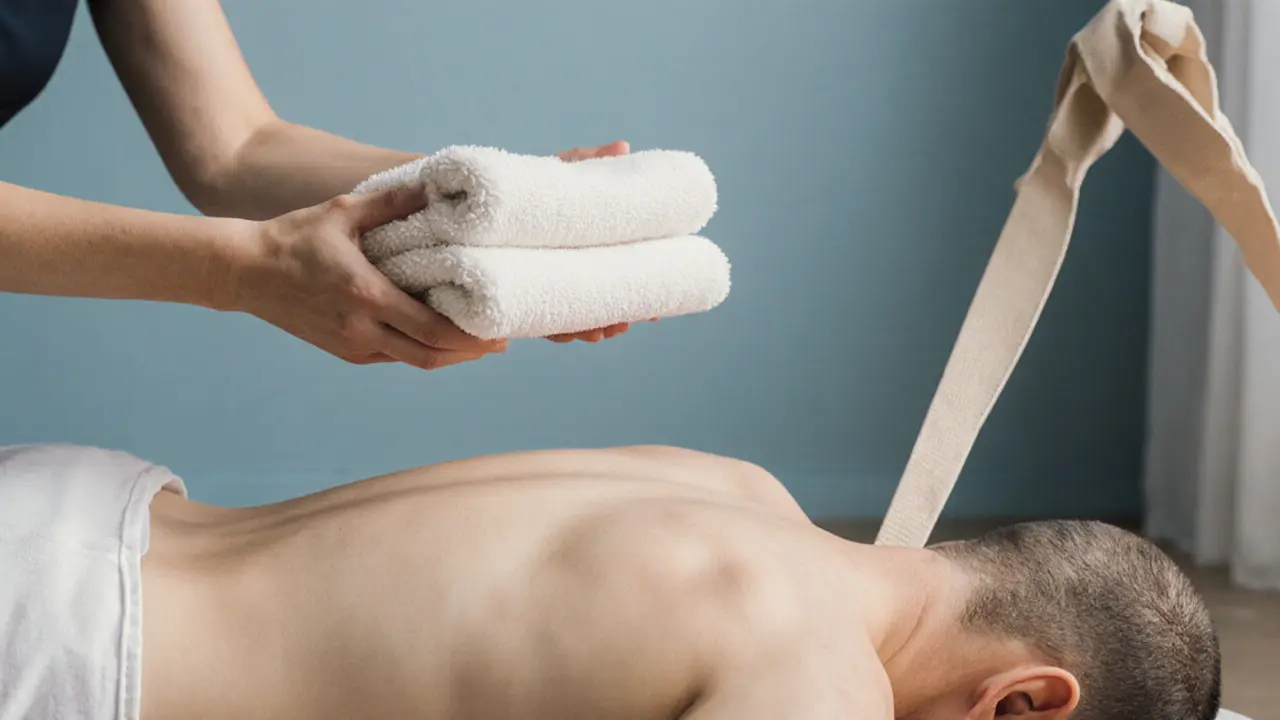Key Takeaways
- The spine, neck, eyes, and abdomen are the body parts most often skipped by professional massage therapists.
- These areas are avoided because of nerves, fragile structures, or internal organs that can be easily irritated.
- Understanding the why helps you choose safe treatments and know when a therapist should ask for your consent.
- Gentle alternatives-like light touch or assisted stretching-can still benefit those zones without the risks of deep pressure.
- Always discuss any health conditions with your therapist before the session starts.
Direct Answer
The parts of the body that are rarely massaged include the spine (especially the vertebral column), the front of the neck, the eye area, the abdomen, and the chest. Professionals tend to steer clear of these zones unless you give explicit permission and they have specific training.
Comprehensive Guide to Uncommon Massage Areas
When you walk into a spa or clinic, you might expect a full‑body experience. In reality, skilled therapists follow a set of safety rules that keep delicate structures out of harm's way. Below we break down why certain regions are left untouched and what you can do instead.
Definition and Context
Massage therapy is a hands‑on treatment that manipulates muscles, tendons, and soft tissue to improve circulation, relieve tension, and promote relaxation. It has roots in ancient cultures and today embraces a wide range of techniques-from Swedish strokes to deep‑tissue pressure. While the goal is overall well‑being, the practice follows strict guidelines about where pressure can be safely applied.

Why Some Areas Are Avoided
Therapists consider three main factors before pressing on any spot: anatomy, medical history, and client comfort.
- Vulnerable anatomy: The spine houses the spinal cord, a bundle of nerves that can be damaged by deep pressure. The front of the neck contains the carotid arteries and the thyroid gland, both of which are extremely sensitive.
- Internal organs: The abdomen holds the stomach, liver, intestines, and reproductive organs. Rough strokes can disturb digestion or cause bruising.
- Sensory nerves: The eyes and surrounding orbital bones have thin skin and delicate blood vessels. Even a light tap can cause eye strain or a headache.
Body Parts That Are Rarely Massaged
Here’s a quick rundown of the zones most therapists steer clear of, plus a short note on why:
- Spine - Direct pressure on vertebrae risks spinal injury; therapists usually work around the muscles that support it.
- Neck (front) - Carotid arteries, thyroid, and larynx are located here; deep strokes can affect breathing.
- Eyes and orbital area - Thin skin and delicate blood vessels make this a no‑go for most modalities.
- Abdomen - Internal organs, especially after meals, can be upset by compression.
- Chest (sternum area) - The heart and lungs lie deep; pressure may interfere with breathing.
- Groin and genitals - Highly sensitive and often considered a privacy boundary.
- Inner knees - Thin tissue and proximity to major blood vessels make it risky.
Safety Tips and Contraindications
Even if a therapist asks whether a specific zone is okay, you should know the red flags:
- Recent surgery or fractures in the area.
- Inflammatory skin conditions (eczema, psoriasis) on the surface.
- Pregnancy - especially the abdomen and lower back.
- Blood clotting disorders or anticoagulant medication.
- Severe osteoporosis - bones become fragile.
Always mention any of these conditions during the intake questionnaire.
Gentle Alternatives for Sensitive Zones
If you need relief in a typically avoided area, ask for a modified approach. Some options include:
- Light effleurage - Soft, gliding strokes that stimulate circulation without deep pressure.
- Therapeutic stretching - Assisted movements that lengthen muscles around the spine or neck.
- Heat packs or warm towels - Provide soothing warmth to the abdomen or chest without touch.
- Acupressure points - Gentle fingertip pressure on specific meridians that can affect internal organs indirectly.

How Professionals Decide What to Touch
Most reputable therapists follow a three‑step assessment:
- Intake interview: They ask about medical history, injuries, and comfort levels.
- Physical observation: Visual cues, range‑of‑motion tests, and palpation of superficial muscles.
- Consent confirmation: Before moving to any borderline zone, they explicitly ask, “Is it okay if I work around your neck?”
This process protects both you and the therapist.
Comparison Table: Common vs. Rarely Massaged Areas
| Area | Typical Pressure Level | Why It’s Common | Why It’s Rare |
|---|---|---|---|
| Shoulders | Medium to deep | Large muscle group, helps release tension | - |
| Lower back | Medium | Supports posture, often sore | - |
| Spine (vertebrae) | Light or avoided | - | Risk to spinal cord, nerves |
| Neck (front) | Light or avoided | - | Carotid arteries, thyroid sensitivity |
| Feet | Medium to deep | Rich nerve endings, good for relaxation | - |
| Abdomen | Light or avoided | - | Internal organs, digestion interference |
Frequently Asked Questions
Why do some massage schools teach students to avoid the spine?
The spine houses the spinal cord, which is vulnerable to compression. Training emphasizes working around the surrounding muscles rather than pressing directly on the vertebrae to prevent nerve damage.
Can I request a gentle neck massage if I have a stiff neck?
Yes, many therapists offer light effleurage or trigger‑point release on the back of the neck, but they will avoid the front where the carotid arteries lie. Always state your comfort level upfront.
Is it safe to get a massage after eating?
It’s best to wait 1-2 hours after a large meal. Massaging the abdomen while digestion is active can cause discomfort or nausea.
What should I do if my therapist presses on a sensitive area unintentionally?
Speak up immediately. A professional will stop, adjust pressure, and ask if you’d like them to continue or skip that spot.
Are there any massage techniques that specifically target the abdomen safely?
Prenatal massage and some forms of Ayurvedic abdominal massage use light, circular strokes and are performed only with explicit consent and after a health screening.
Wrapping It Up
Knowing which parts of the body are not commonly massaged helps you avoid uncomfortable surprises and lets you focus on the zones that really benefit from a therapist’s touch. Always communicate openly, respect the therapist’s safety guidelines, and explore gentle alternatives when you need relief in the more delicate areas.







October 7, 2025 AT 14:10
Listen up, anyone who thinks they can just glide over the spine without respecting the nervous system is basically waving a red flag for disaster! The vertebral column is not a pillow you can press into-it's the highway for every signal that keeps you alive. When a therapist shuns the spinal bones, they're actually protecting you from catastrophic nerve damage, something most amateurs just don't grasp. I've seen too many clients leave spas with lingering twinges because a careless practitioner ignored basic anatomy. So, next time you hear a therapist brag about "deep tissue everywhere," remember the spine is sacred ground. Don't let anyone convince you otherwise.